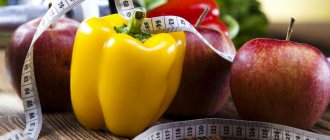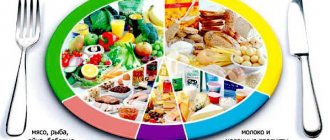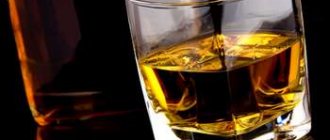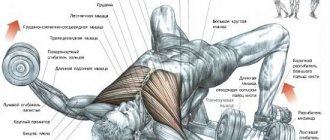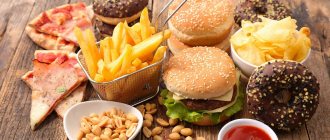Cycling is a type of exercise on special bicycles that replicates a race at different speeds. The program is very effective, therefore it is in demand in sports centers. Aerobic cycling is a great way to quickly get your body in shape. This program is also called spinning.
The question of how many calories this exercise machine burns is very popular, especially among women. To quickly get rid of extra pounds, you need to exercise on the simulator 3-4 times a week. If the goal is to strengthen muscles, 2-3 times will be enough.
Zumba: 1000 calories per hour
"Everybody dance!" - this is the motto of the workout, which combines movements from hip-hop, Latin and rock and roll. Having the talent to rotate your hips a la Jennifer Lopez is not necessary: the goal of the class is not to memorize the movements, but to pump up the muscles (the choreography is chosen to involve all groups). And get ready to sweat a lot: Zumba is an intense activity.
How many calories do squats burn?
So how many calories do squats burn? It is impossible to accurately calculate the total number of kilocalories, since it is necessary to take into account body weight and the weight of the barbell (dumbbells) with which a person works. Approximately one person weighing 60 kg, performing 50 squats in a few minutes, burns 22 kilocalories. For those who have seriously decided to lose weight, it is important to know how many calories are burned when performing 100 squats. If you sit down a hundred times, a person will spend about 42 kcal. For beginners, fifty squats should be performed gradually, combining approaches with rests. Doing 10, 20, 30 squats, a person will not be able to start the process of burning units of energy value. Squats combined with jumping increase the level of energy burned.
Calculation of the correct ratio of calories consumed and received during squats
Ideally, the body should burn as many calories per day as it receives per day. In exercises where the load alternates from one limb to another (exercises with dumbbells, lunges, etc.), you need to sum up the weight of the weights, but not the approaches. Lunges with dumbbells weighing 10 kg 10 times on each leg, the weight will be 20 kg, but the repetitions will be 10. The calculation of ratios is carried out primarily taking into account the weight category. It is necessary to take into account not only body weight, but also factors such as the person’s initial physical training, the presence of contraindications to performing certain types of physical activity, and recent joint injuries. Dumbbells put more stress on the muscles, which means more energy will be spent.
To most accurately determine the calorie consumption of squats, you need to multiply your weight by 0.095. Next, you need to multiply the resulting number by the time it takes to perform certain exercises.
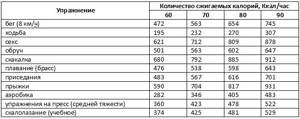
How many calories do squats burn?
- low intensity training: 1 hour – 280 kcal, 1.5 hours – 420;
- medium intensity training: 1 hour – 365 kcal, 1.5 hours – 545;
- high intensity training: 1 hour – 450 kcal, 1.5 hours – 675.
- low intensity training: 1 hour – 250 kcal, 1.5 hours – 375;
- medium intensity training: 1 hour – 325 kcal, 1.5 hours – 490.
- high intensity training: 1 hour – 400 kcal, 1.5 hours – 600.
- low intensity training: 1 hour – 220 kcal, 1.5 hours – 310;
- medium intensity training: 1 hour – 285 kcal, 1.5 hours – 400.
- high intensity training: 1 hour – 350 kcal, 1.5 hours – 525.
Interesting to know! There are a wide variety of calculators on the Internet that facilitate the process of calculating the number of kilocalories that need to be spent.
Trail running: 700 calories in 40 minutes
Of course, it all depends on how fast you run. However, the average is 250 calories in 30 minutes at 12 km/h. Cross-country running is more intense: a brisk jog can help you lose 700 calories in 40 minutes. Even more energy will be required if you run uphill. Well, the most effective is moving up the stairs: 900 calories per hour.

Benefits of cycling training
Cycle spinning is rightfully considered one of the most intense cardio workouts that allows you to effectively fight excess weight. In addition, cycles are very adaptive exercise equipment, thanks to which an athlete can quickly change the level of load depending on his own capabilities during training.
A similar workout would be a good solution for those who want to increase muscle mass. Effective cardio will improve blood circulation, which allows your muscles to receive significantly more oxygen.
It is important to note that, unlike many fitness practices, cycling is universal and suitable for both men and women.
Cycling: 1000 calories per hour
Pedaling was invented precisely in order to burn maximum calories. True, efficiency directly depends on how long and how intensely you ride the bike. In a standard 45-minute workout, you can lose 500–700 calories. Want to burn 1000? Then real hardcore awaits you - an hour of classes in the most vigorous mode. You will sweat like crazy, and at the same time strengthen your muscle corset and train your endurance.

Table of activities and calories burned
Having a slim, toned body is not difficult, knowing which activity will help you burn calories:
| Type of activity | Spent time | Number of calories burned |
| Swimming at a moderate pace | 60 minutes | 590 kcal |
| Lawn care | 2 hours | 670 kcal |
| Climbing uphill | 3 hours | 1050 kcal |
| Rock climbing | 120 minutes | 1075 kcal |
| Walking up the stairs | 50 minutes | 460 kcal |
| Shoveling snow | 50 minutes | 500 kcal |
| Tennis game | 1 hour | 560 kcal |
Losing weight is possible without exhausting diets and strict dietary restrictions. Physical activity will help cope with this task.
HIIT workout: 1500 calories per hour
The most talked about fat burning program recently. HIIT (high-intensity interval training) is high-intensity interval training (aka HIIT), which involves alternating short periods of active work and less severe recovery periods. What happens to the body at this time? The process of active oxygen absorption begins, requiring fat burning and high glycogen consumption, the pulse “jumps”, testerone production increases, and metabolism accelerates significantly for the whole day. There are HIIT options for any fitness trainer. True, the training has a drawback: beginners simply won’t be able to handle it.
10, 20 and 30 squats: how many calories do you burn?
Based on the data given above, it will be easy to calculate. Provided that the trainee weighs 60 kg, then performing squats 10 times will burn approximately 4-5 calories.
The heavier the weight, the more calories will be burned during the exercise. As we can see, sitting down 10 times will not produce any special results. This is a small amount that does not require any energy consumption.
Accordingly, 20 squats will consume 8-10 kcal, and 30 squats will consume 12-15 calories.
How many calories are burned by squatting 50 times?
To calculate correctly, we use the formula above - the average weight is 60 kg, with 100 squats, 40-45 calories are spent. Accordingly, 50 squats will burn 20-22 calories.
Also small enough for any significant progress. Therefore, if you train at home and without weights, try to do at least 50 repetitions for each approach. With 5-6 approaches, the exercise will be useful.
How many calories do you burn when squatting: 10, 20, 50 or 100 times?
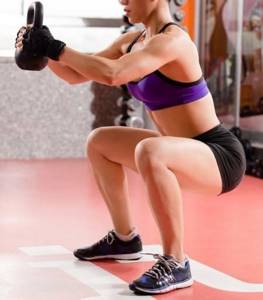
It has a beneficial effect not only on the target muscles, but also improves the tone of the entire body, speeds up metabolism, burns fat deposits and much more. Therefore, the question often becomes: how many calories are burned when doing squats? After all, representatives of the fair sex often use this exercise not only to form attractive legs and buttocks, but also as an effective tool for losing weight.
Despite the relative simplicity of the exercise, basic exercise is beneficial for the whole body.
How many calories does squatting cost? Let's try to understand this issue in more detail. It’s worth noting right away that there are no clear numbers here, because a lot of things depend on the intensity, weight, technique, etc.
In this material we will try to establish how many kilocalories can be spent on average when performing exercises with and without weights, and how to correctly calculate calorie consumption for those who are interested in losing weight.
What are the benefits of squats?
Before we figure out how many calories are burned when squats, let's consider all the advantages of this exercise.
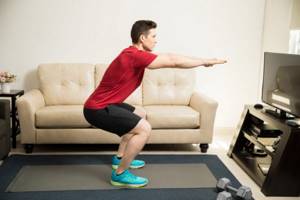
Squats are a basic physiological movement that combine aerobic and strength training.
The squat is one of the most effective and energy-consuming exercises that actively burns a fairly large number of calories.
Squats have the following benefits:
- Effective gain of muscle mass. Helps strengthen and develop all leg muscles. At the same time, many muscles are involved in the movement, which allows you to accelerate the production of testosterone and ensure growth.
- Great for burning fat. Since more than half of the body is involved in the exercise, enough energy is required. Accordingly, this is one of the most energy-intensive exercises.
- Improves mobility. Strength and endurance in the lower extremities allows for better control of the body, and through regular training, it will be possible to withstand more load on the legs.
- Increased functionality. Ideal not only for those who go to the gym, but also for those who play other sports - running, cycling, swimming, etc.
- Differs in versatility. The exercise will benefit both beginners and experienced trainees. They can be done both in the gym and at home.
- Improves coordination. The exercise allows you to develop not only strength skills and build muscle mass, but also improve control over movements.
- Increases flexibility. Excellent for increasing the elasticity of leg muscles, which helps improve athletic achievements in other disciplines.
- Strengthens joints. With the correct technique, the knees and hip joints receive an even load, which increases their strength and endurance. It is important not to rush into increasing the weights on the barbell, but to do everything gradually.
- Great for training your abs. When performing the exercise, the abdominal muscles take part in the work. Regular squats help to pump up the abs, strengthening the muscles, which will be important for those who want elastic abs.
- Availability of variations. You can squat using various techniques, shifting the emphasis to the quadriceps or buttocks.
How to make the process more efficient?
Of course, counting calories during weight loss is an effective tool for speeding up the process. However, it is important to understand the influence of other factors. For example, diet. To speed up the weight loss process, it is important:
- Reduce the number of calories you consume. For example, switch to foods with low energy value. Eliminate fast carbohydrates, fast food and other high-calorie foods.
- It is necessary to use weights. If this is not possible, then the training should take place at the highest possible intensity. When training at home, you should constantly increase the number of repetitions and approaches. This will improve your endurance and make your body fit and elastic.
